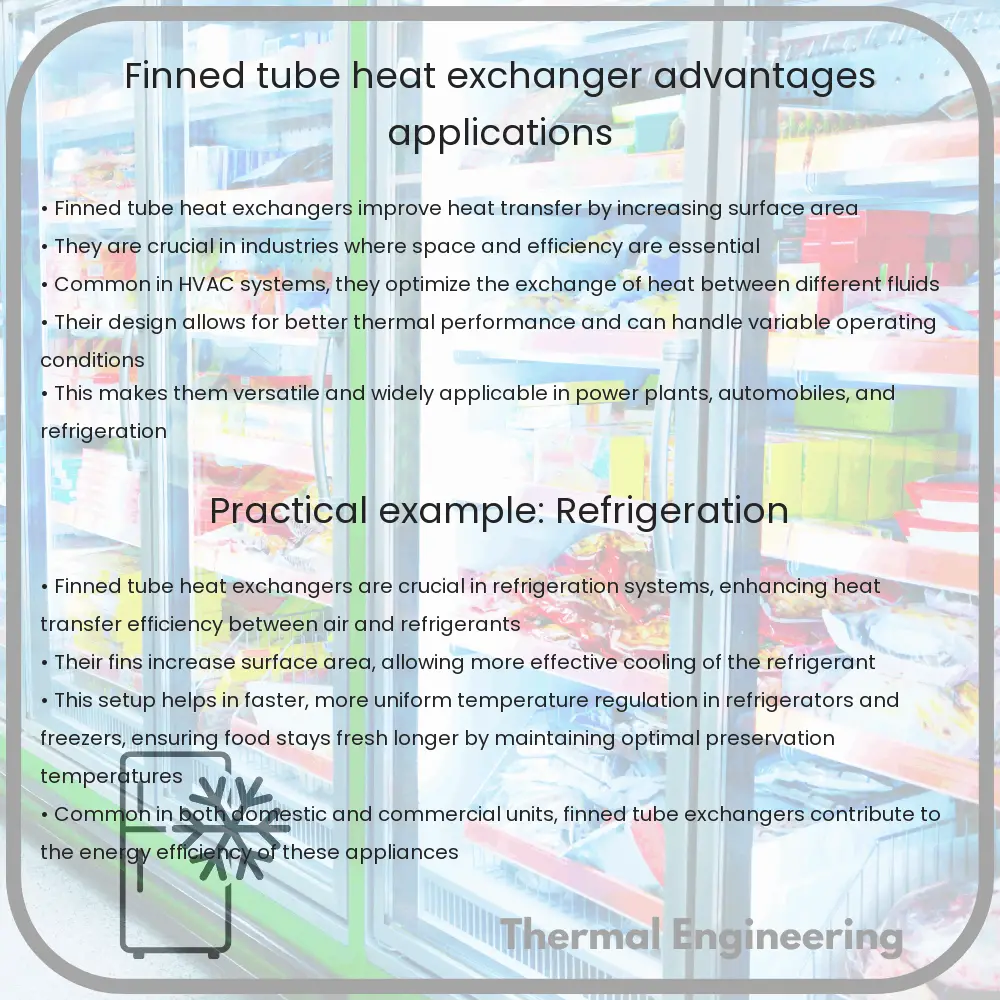Learn how a finned tube heat exchanger increases efficiency and versatility in heating and cooling applications across various industries.

Finned Tube Heat Exchanger: Understanding its Advantages and Applications
A finned tube heat exchanger is a type of engineering device designed to efficiently transfer heat between two or more fluids, gases, or vapors. This type of heat exchanger utilizes fins or extended surfaces attached to the tube carrying the heat transfer fluid. The fins increase the external surface area of the tube, enhancing the heat exchange process by facilitating a higher rate of heat transfer compared to a plain tube.
How does a Finned Tube Heat Exchanger Work?
In a finned tube heat exchanger, tubes with extended outer surfaces or fins are mounted inside a shell. One fluid flows through the tubes and the other fluid flows outside the tubes but inside the shell. Heat is transferred from the hotter fluid to the cooler fluid through the walls of the tubes and the attached fins. The presence of fins increases the surface area that is in contact with the fluid outside the tubes, accelerating the heat transfer process.
Advantages of Finned Tube Heat Exchangers
- Increased Efficiency: The fins provide additional surface area, which increases the heat transfer rate. This makes finned tube heat exchangers more efficient especially in applications involving gases where the heat transfer coefficient is relatively low.
- Compact Size: Due to the enhanced heat transfer effectiveness, finned tube heat exchangers can be designed smaller than their unfinned counterparts while delivering the same performance. This reduction in size is crucial for applications where space is a premium.
- Flexibility in Applications: Different types and arrangements of fins allow these heat exchangers to be tailored for specific fluids and flow conditions, enhancing their versatility across various industries.
- Cost-Effective: Despite the higher initial cost compared to plain tube heat exchangers, the improved heat transfer efficiency can lead to significant savings in operational costs over time.
- Resistance to fouling: Due to the increased turbulence created by the fins, there is a reduction in the buildup of deposits on the tube surface, which helps in maintaining efficiency and reducing maintenance costs.
Applications of Finned Tube Heat Exchangers
- HVAC Systems: Utilized extensively in heating, ventilation, and air conditioning systems for efficient heat transfer.
- Power Plants: Employed in power plants for waste heat recovery and to enhance the efficiency of the energy conversion process.
- Automotive: Used in the cooling systems of automotive vehicles and in heat recovery systems to improve engine efficiency.
- Chemical Processing: Critical in processes requiring stable and efficient heating or cooling, such as in reactors and distillation columns.
- Refrigeration: Used in evaporators and condensers in refrigeration systems to enhance heat exchange between refrigerants and the surrounding environment.
- Food Processing: Employed in the processing of food products where precise temperature control is needed.
The finned tube heat exchanger with its robust design features and significant operational advantages plays an indispensable role in modern industry. By enhancing the efficiency of heat transfer processes, these devices contribute to energy savings, cost reduction, and overall system effectiveness, making them a crucial component in a wide range of applications.